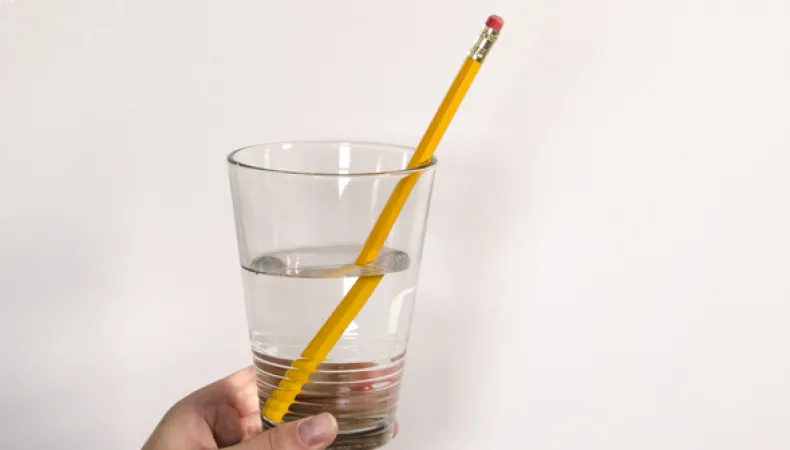
Seeing isn’t always believing, especially when refraction is involved! See how water bends light, “breaking” a pencil right before your eyes.
What you need
- Clear, round drinking glass
- Pencil
- Tap water
Make it
- Fill the drinking glass about two thirds of the way with water.
- Place the pencil inside the glass on an angle, so it’s resting on the rim.
Test it
Bend down until you are looking in line with the top of the water. It should look as though the pencil is broken in two!
Explain it
Light travels through different materials, or mediums, at different speeds. In this experiment, light first travels through the air – which is easy to move through – and then through the water, where it slows down. This change in speed causes the light to bend, or refract, meaning that the part of the pencil that is in the water will appear shifted.
Observe It
Many birds hunt by flying over the surface of water, then diving in once they see a fish. Like in this experiment, the image a bird sees of a fish isn’t where it really is; the image can actually be quite far from the real fish. The bird has to adjust where it dives in order to catch the fish. This effect is also caused by the refraction of light once it hits the water.
Go further
Draw an arrow on a piece of paper and hold it up behind the glass of water, about 30 cm from your eyes. What do you observe?

As if by magic, the arrow flips around!
The round outside of the glass forces the water into a rounded shape, which acts as a convex lens. This lens bends the incoming light towards the middle. Here, the light rays meet at what is called the focal point. Past the focal point, the image is inverted because the light rays overlap.

Program Details
- View all programs at the Canada Science and Technology Museum
- View other programs related to Sciences, Education


